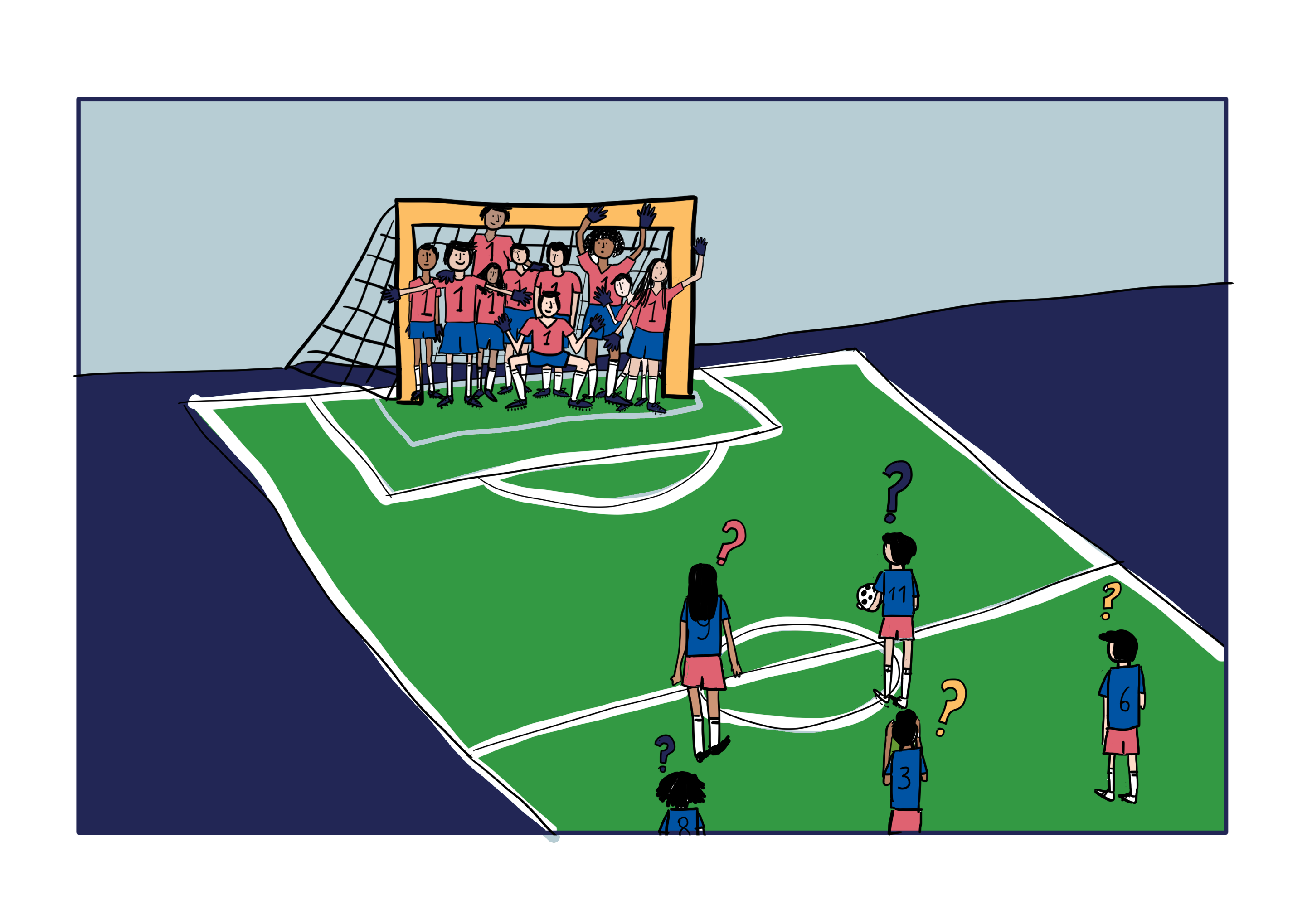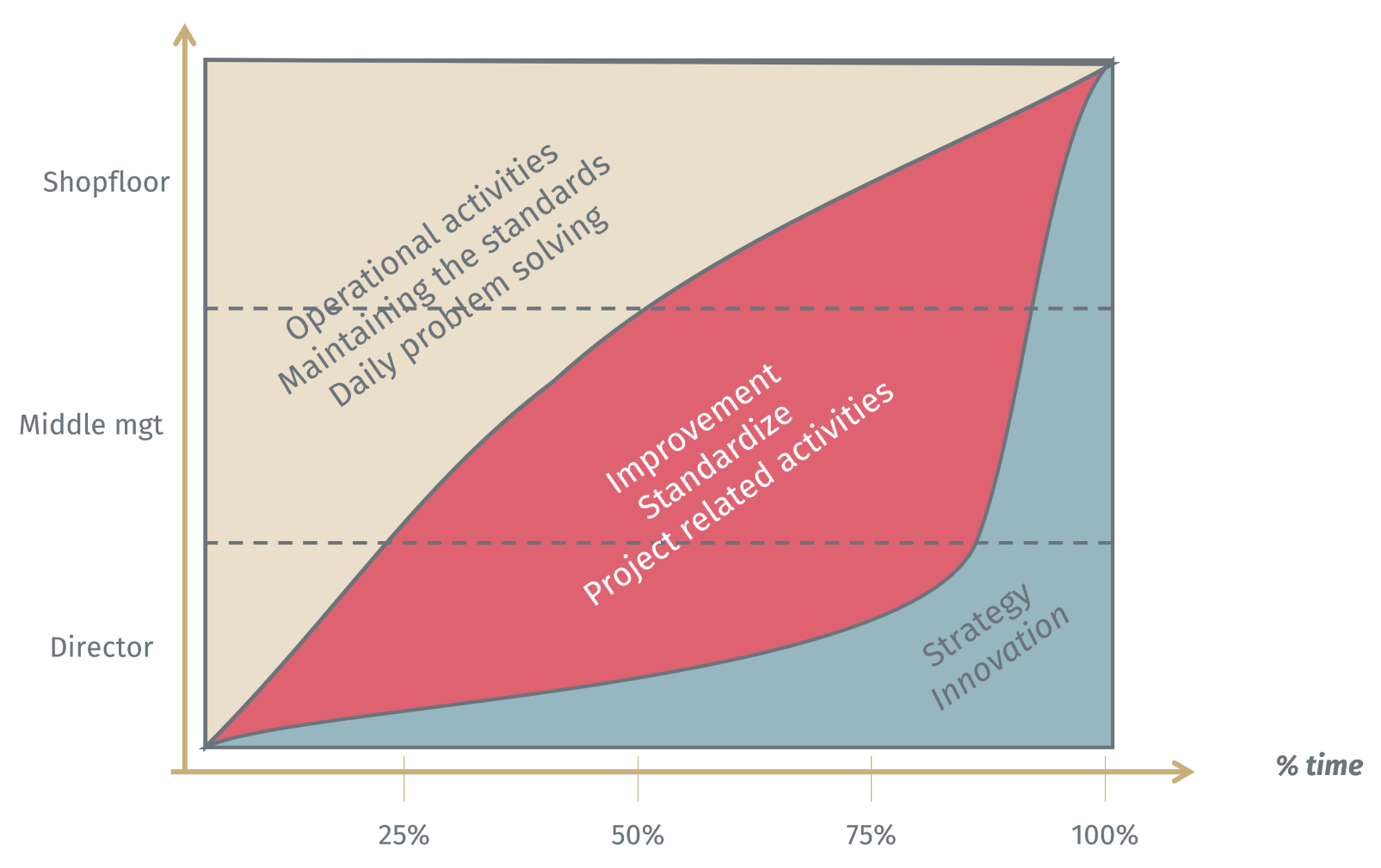
Part 3: Clear Roles and responsibilities in Obeya
Obeya. Is it another new LEAN trend or an essential foundation for every organization? In this 5-part blog series, we delve into the fascinating world of Obeya. Discover how Stanwick utilizes this approach in future-proof transformations. In Part 3 of this series, we provide some tips for establishing clear team frameworks.
When we lack organization, systems fail to function. In the previous part, we learned that a solid team structure is the foundation for a successful Obeya. However, a good team structure alone is not sufficient. To achieve an efficient autonomous Obeya team, we must also organize ourselves within these teams. A football team consisting only of goalkeepers won't concede any goals, but they won't win the match either. What roles do we need in our team to succeed?
When establishing these team frameworks, there are three important factors to consider:
- Does each team operate within its decision-making authority?
- Are the right roles assigned within the team?
- Are the expectations clear for everyone?
Every team has its unique playing field within Obeya
Every team must contribute to the organization's strategic goals. This can only be accomplished when the strategy is translated into concrete and practical terms at every level and within each team. An operational team shouldn't spend 50% of their time in strategic meetings but should fully contribute to the organization's priorities and objectives. This translation ensures that we create practical playing fields of KPIs, tasks, and responsibilities. Setting up these playing fields is not easy. Start with a simple foundation that can evolve with the team's maturity. Each team is different, so playing fields are unique. As teams grow, playing fields must be able to dynamically change.

Fig. 1 Unique playing fields for each team
Roles within the team during the Obeya meeting
The Obeya approach is not as extensive as a complete transformation into self-organization. We don't redistribute substantive tasks and roles within the team. However, we provide them with insights into the principles of autonomy by encouraging them to think about the necessary roles within the Obeya meeting. There are three types:
- Roles during the Obeya meeting, such as facilitator, timekeeper, secretary and process guardian.
- Roles within the Obeya team, such as experts, trainers, coaches, action and project owners.
- Roles during the Obeya transformation, such as sponsor, owner, pilot team or Obeya coach.
We refer to these as roles rather than functions because the team should have the flexibility to utilize these roles interchangeably. One person can perform different roles. Obeya will also help the team visualize and clarify the day-to-day organization: Who is doing what today, and who is responsible for which action?
Clear expectations during Obeya transformation
The goal of Obeya is not just to achieve results but to learn from one another. As the team's learning capability improves, its performance will also enhance. While we can clearly visualize and track KPIs, are we also clear about what we expect from the teams and employees?
How do we make expectations regarding mindset, behavior, and autonomy clear? Get creative with visualization, training, and communication. Invest time in mindset workshops for each team. Regularly seek feedback and engage in personal conversations with employees. Establish connections with annual plans and individual objectives.
When team members take up the right teamroles, know which goal to aim for, and understand what is expected of them, we are on the path to a winning team.
In the next part of the blog series, we will dive deeper into engagement and ownership
Obeya - what leadership do we expect? Read more in part 4
In part 5 we focus on the last Obeya fundament: the obeya room as results-driven system. What are the keys to success, and what are the pitfalls during the Obeya transformation project?
Obeya - how do we setup the Obeya room? Read more in part 5
Did you miss the previous blogs?
Obeya - what is the team structure and the escalation structure? Read more in part 2
If you have any specific questions, please visit our website or contact us. Stanwick is here to support your future-proof transformation!
Annelies Boecxstaens


